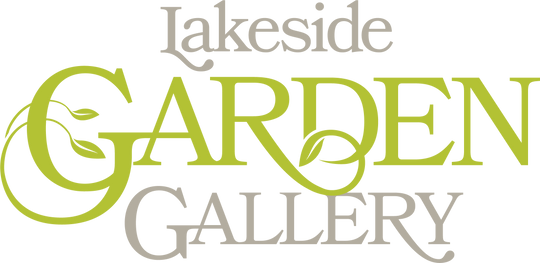Spring is more than just a time of new growth—it's the beginning of a vital season for pollinators. Bees, butterflies, hummingbirds, beetles, and other pollinating species are emerging after winter, hungry and ready to get to work. But they need your help.
Creating a pollinator-friendly garden doesn’t just support the environment—it also boosts your blooms, vegetables, and fruit production. Whether you're working with a small backyard, containers on a patio, or sprawling garden beds, selecting the right plants can make a significant impact.
As a garden specialist, I’m sharing the top pollinator-supporting plants to grow this spring, along with tips to create a thriving, buzzing landscape.
🌼 Why Pollinators Matter
Pollinators play a crucial role in the health of our ecosystems. About 75% of all flowering plants and roughly one-third of the food we eat rely on animal pollinators. Yet, due to habitat loss, pesticides, and climate change, many pollinator populations are in decline.
The good news? Gardeners can make a major impact by planting with purpose.
🐝 1. Early Bloomers Are Essential
Spring-blooming plants provide much-needed food for pollinators just coming out of winter dormancy. Many native bees, butterflies, and even hummingbirds rely on early blooms to refuel.
Top Early Bloomers for Pollinators:
-
Crocus – One of the first flowers to pop up, crocus is rich in nectar and pollen.
-
Hellebores (Lenten Rose) – These shade-tolerant perennials bloom in late winter to early spring and provide a steady food source.
-
Willow (Salix spp.) – Willow trees and shrubs bloom early and are especially valuable to native bees.
-
Dandelions – Often dismissed as weeds, dandelions are actually one of the earliest food sources for bees.
Tip: Avoid mowing too early in spring—letting early bloomers like dandelions and clover grow provides critical nutrition to hungry pollinators.
🦋 2. Native Plants Are a Must
Pollinators evolved alongside native plants, making them a perfect match in both timing and nutrition. Native plants tend to require less care, are better adapted to local conditions, and offer more reliable nectar and pollen sources than many non-native ornamentals.
Recommended Native Pollinator Plants (by region):
-
Eastern North America:
-
Bee Balm (Monarda)
-
Purple Coneflower (Echinacea purpurea)
-
Black-Eyed Susan (Rudbeckia hirta)
-
-
Western North America:
-
California Poppy (Eschscholzia californica)
-
Lupine (Lupinus spp.)
-
Blanket Flower (Gaillardia spp.)
-
-
Across Canada:
-
Wild Bergamot
-
Yarrow (Achillea millefolium)
-
Goldenrod (Solidago spp.)
-
Tip: Always check your local garden center or extension office for a list of regionally native plants.
🌸 3. Choose a Variety of Bloom Times
To support pollinators all season long, aim to plant flowers that bloom from early spring through late fall. Pollinators don’t stop needing food after spring—they’re active until the first frost.
Spring bloomers to plant now:
-
Lungwort
-
Siberian Squill
-
Grape Hyacinth
-
Wild Columbine
Bonus Tip: Group similar plants together in clusters to create a stronger visual and scent signal for pollinators.
🐦 4. Herbs and Edibles Pull Double Duty
Many culinary herbs are also pollinator magnets—and you get to enjoy the harvest, too! Allow some herbs to flower rather than harvesting them all. Their blooms will bring in bees, hoverflies, and butterflies.
Great Pollinator-Friendly Edibles:
-
Chives – Their pom-pom-like purple flowers are favorites for bees.
-
Thyme and Oregano – Both provide small but nectar-rich flowers.
-
Borage – A star-shaped blue flower that bees can’t resist.
-
Lavender – Not only smells heavenly, but attracts bees and butterflies in droves.
-
Strawberries – Their small white flowers are appealing to bees before the berries form.
Pro Tip: Avoid chemical pesticides on herbs and edibles if you want to keep your garden safe for pollinators.
5. Don’t Forget Host Plants
While nectar-rich plants feed adult pollinators, host plants support their full life cycle. Without host plants, species like butterflies can’t reproduce in your garden.
Important Host Plants:
-
Milkweed (Asclepias spp.) – The sole host plant for monarch butterflies.
-
Pearly Everlasting – A host for American lady butterflies.
-
Violets – Host plants for fritillary butterflies.
-
Asters – Late-season bloomers and larval hosts for several butterfly species.
Tip: Leave some garden mess—fallen leaves, twigs, and dry stems can provide nesting material and shelter for pollinators.
🌿 Final Pollinator Garden Tips
-
Skip the pesticides. Even organic sprays can harm bees and butterflies.
-
Add water. A shallow dish with stones for landing gives pollinators a drink.
-
Use native grasses and shrubs. These support wild bees and nesting areas.
-
Plant densely. The more blooms in a small area, the better for foraging efficiency.
🌍 Help Your Garden Help the World
By planting with pollinators in mind, you’re contributing to the health of your local ecosystem and ensuring that your own garden thrives with stronger flowers, bigger harvests, and more biodiversity. Supporting pollinators isn’t just good for bees—it’s good for us all.
So this spring, don’t just plant for beauty. Plant for purpose—and let your garden buzz with life.

